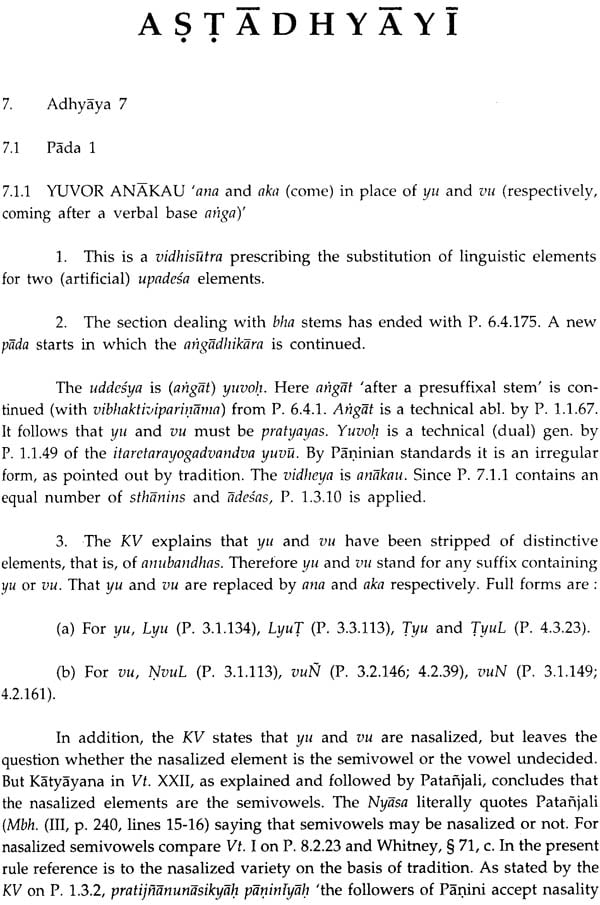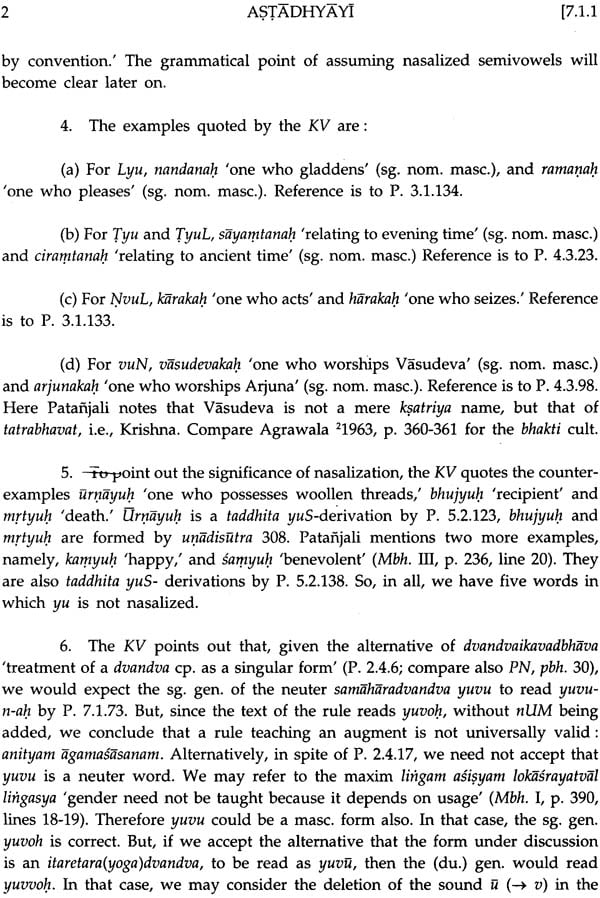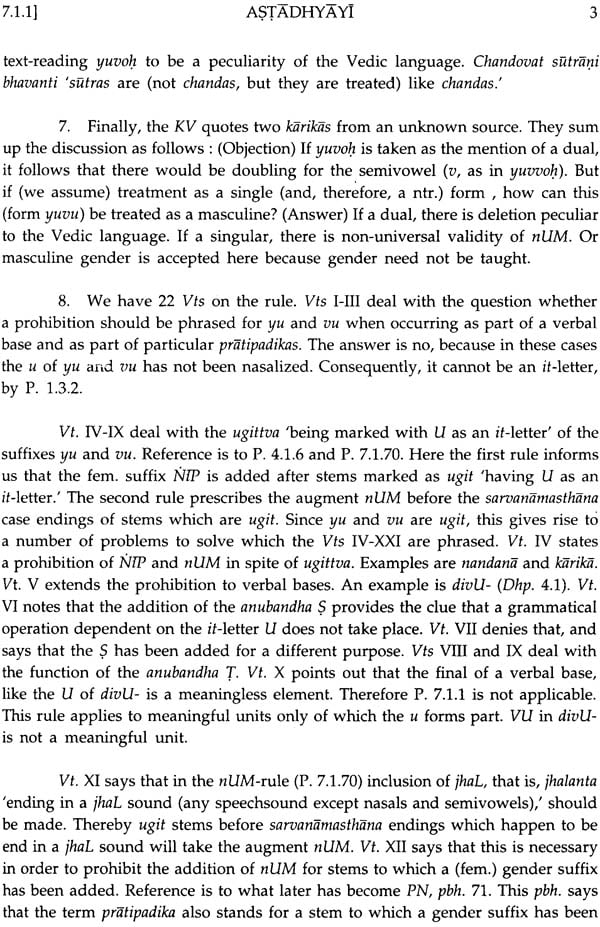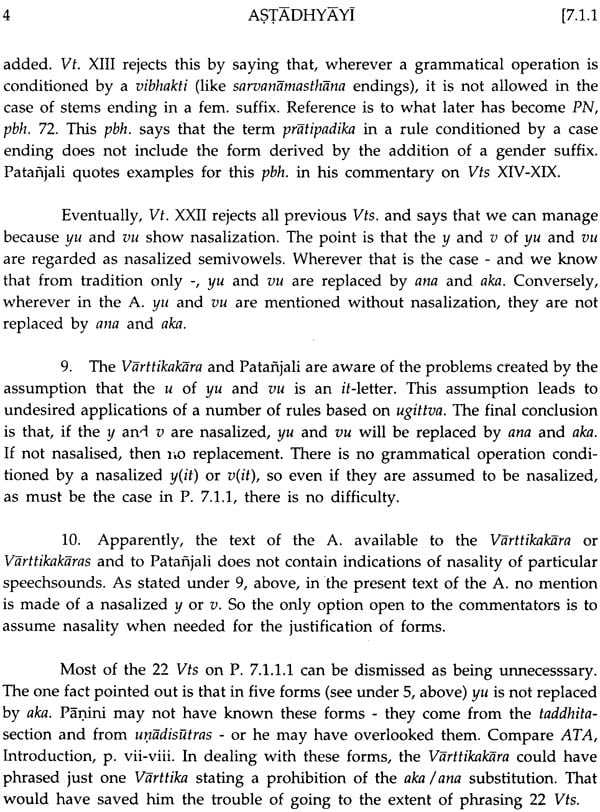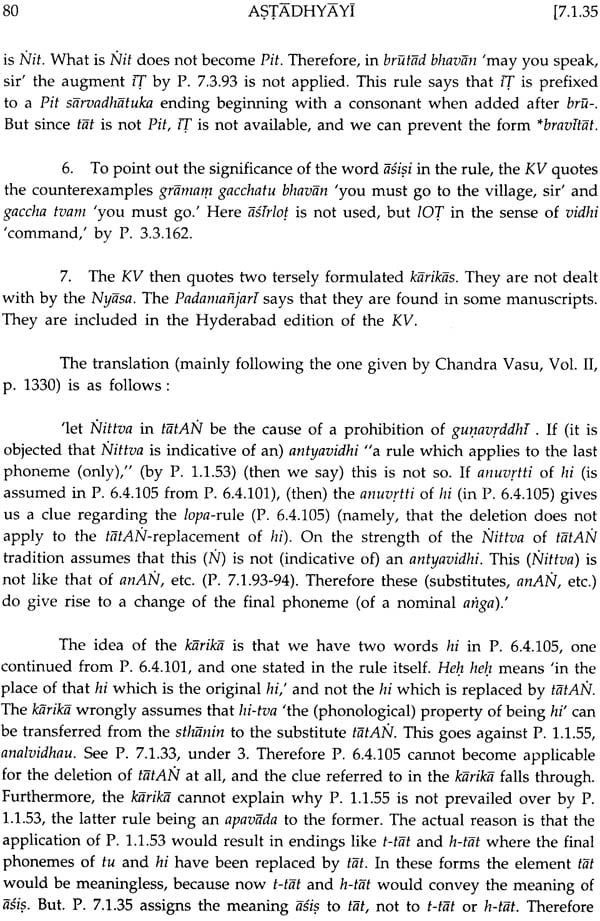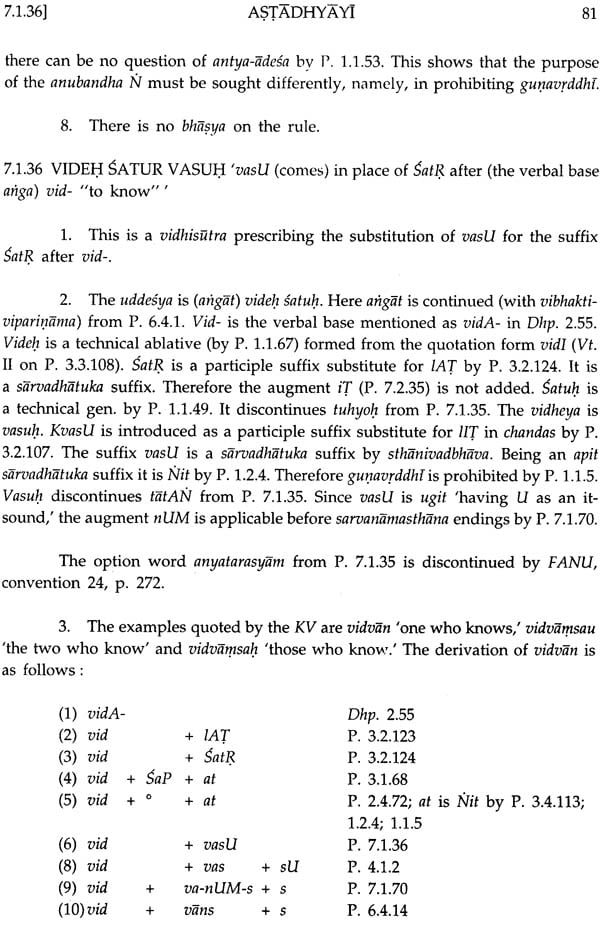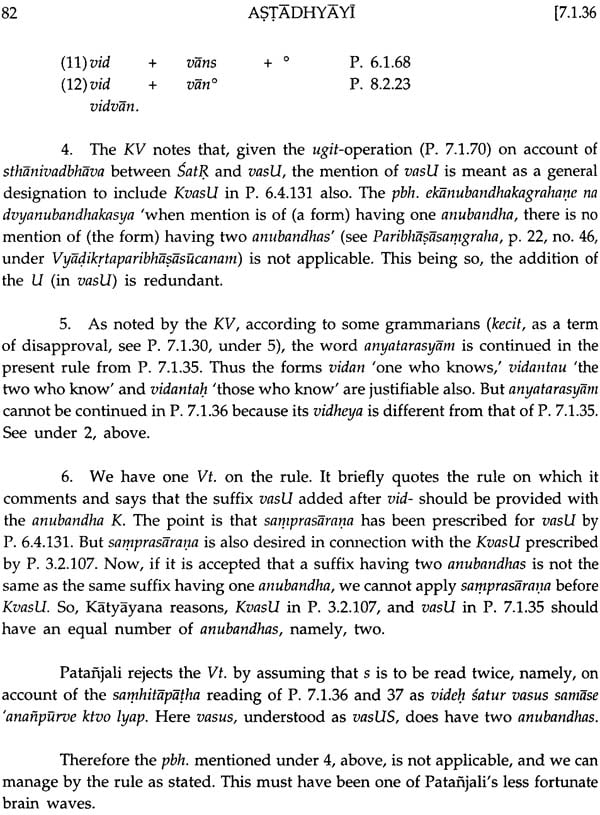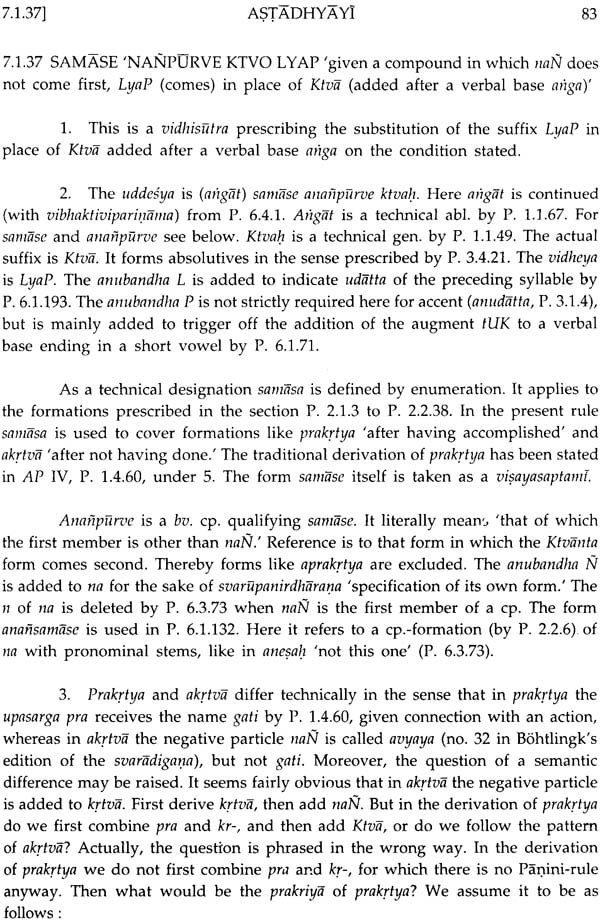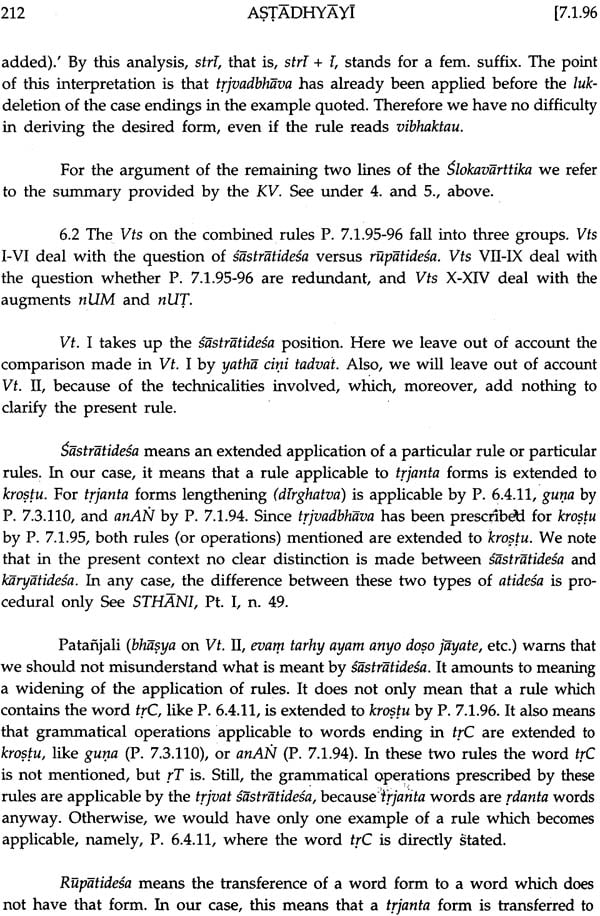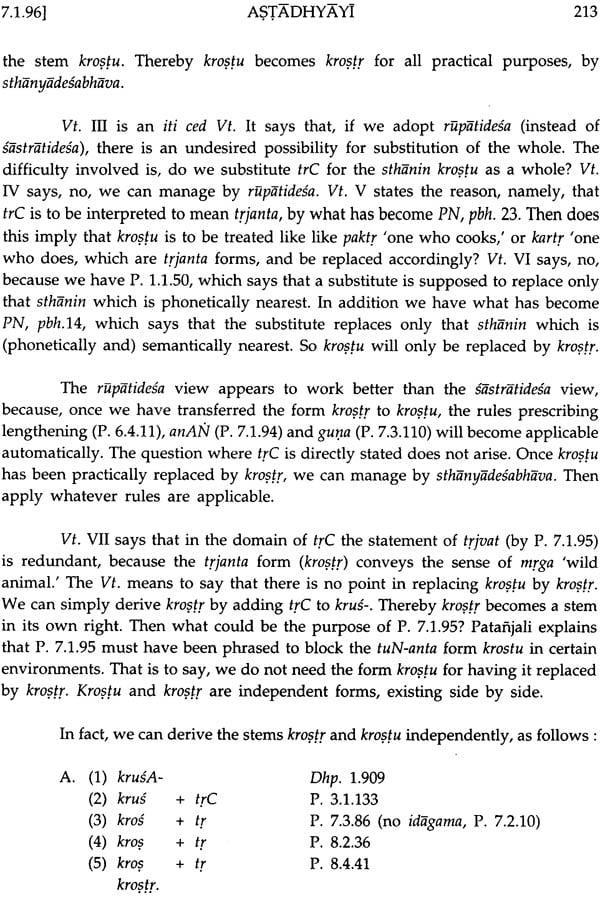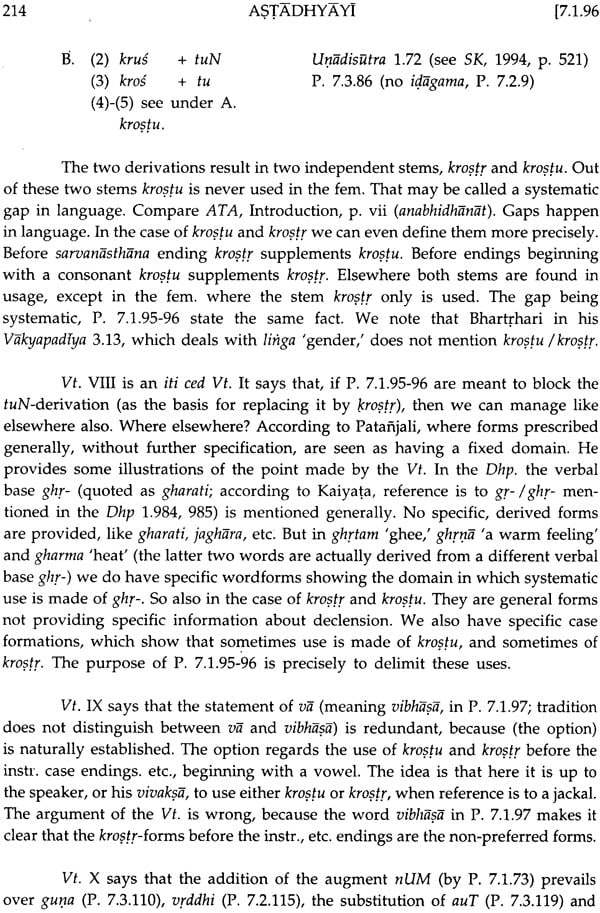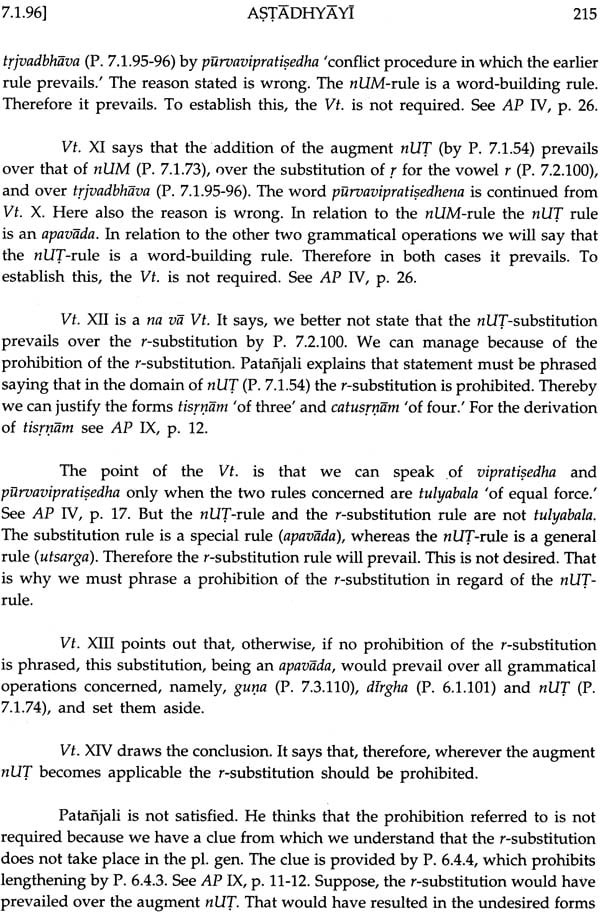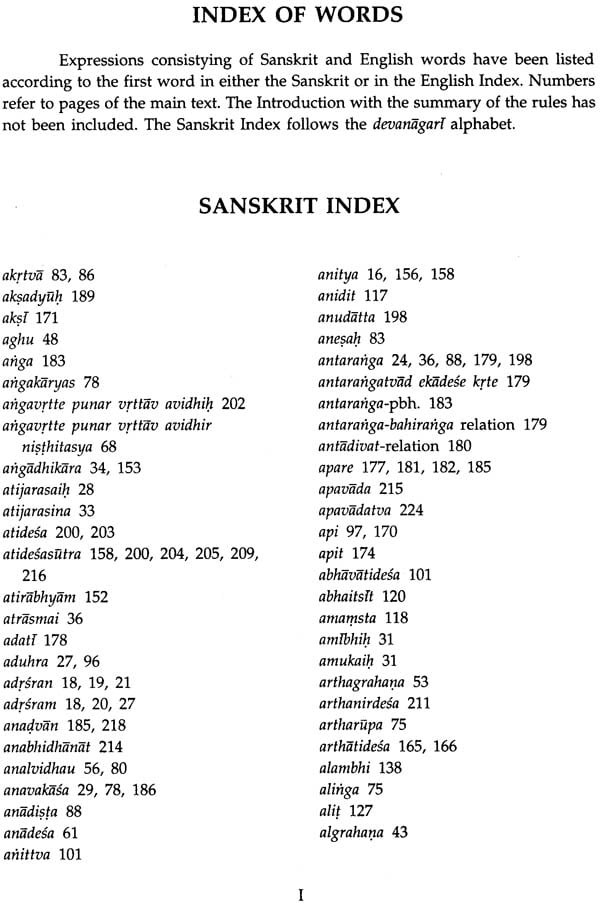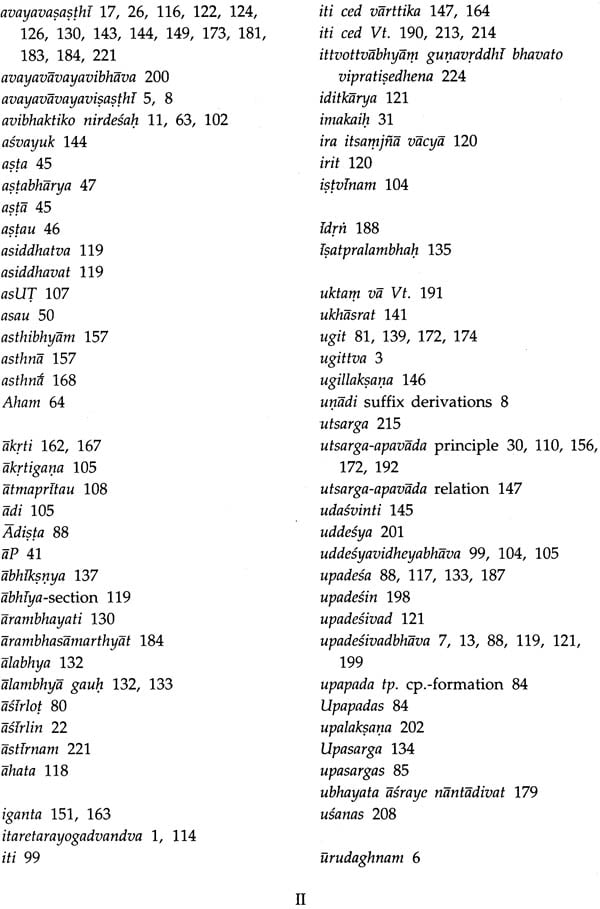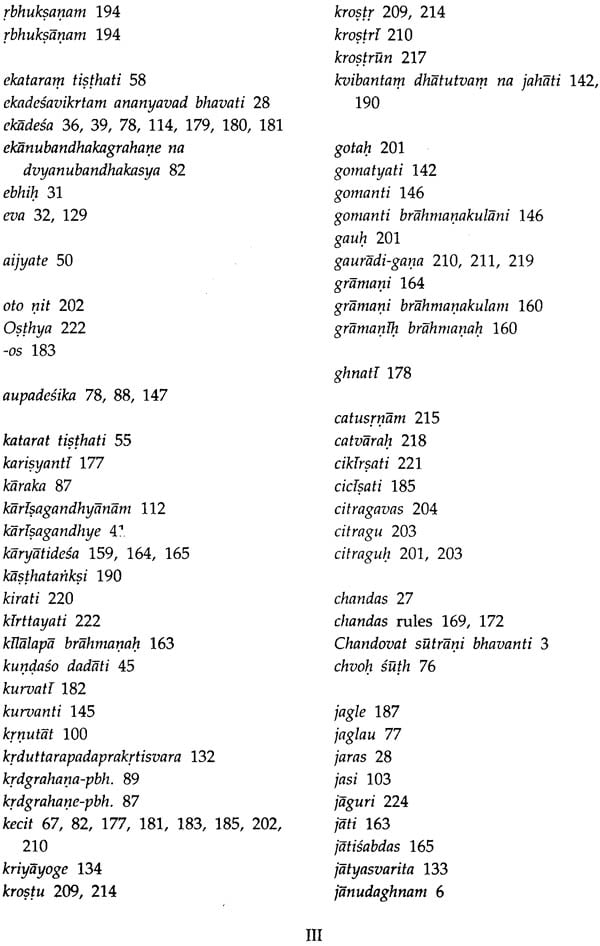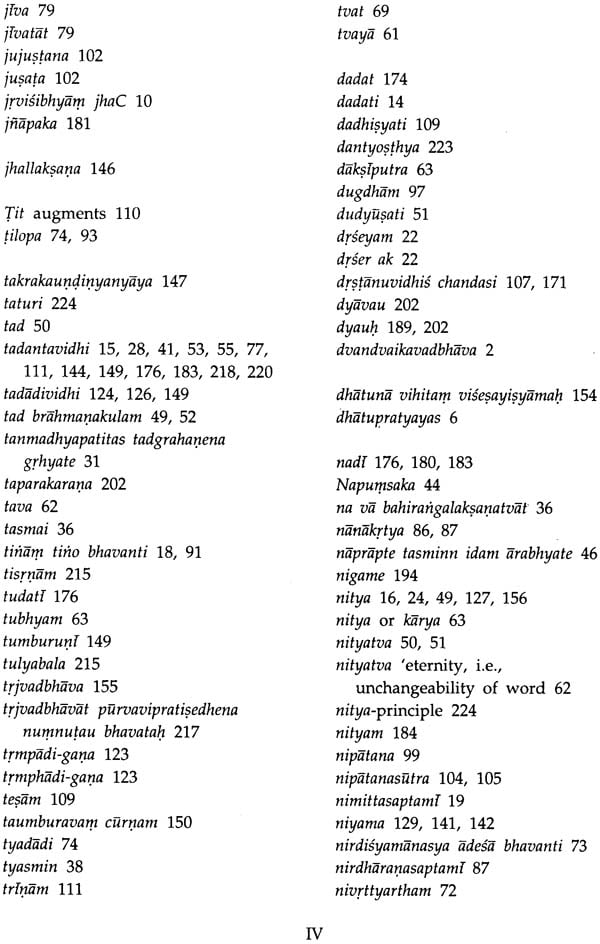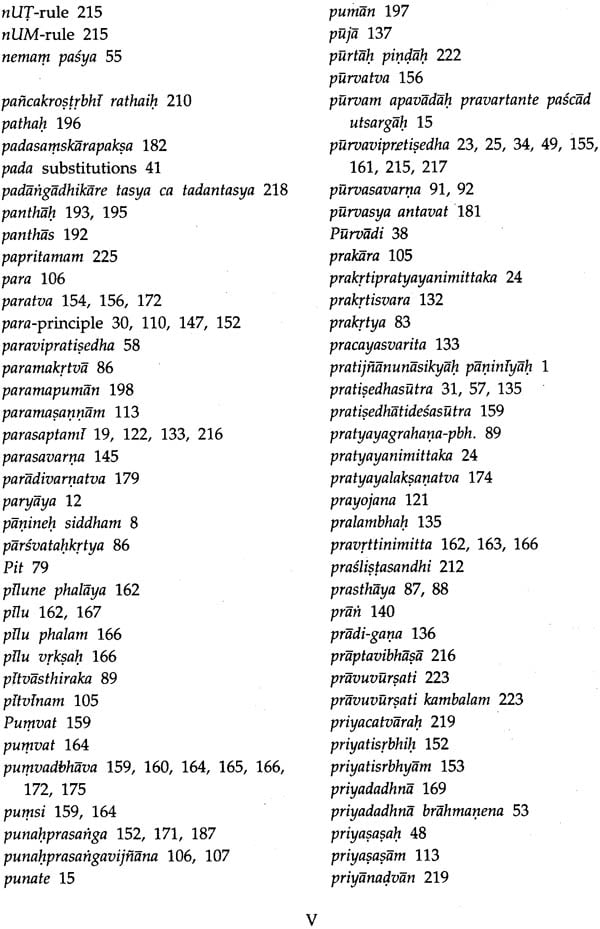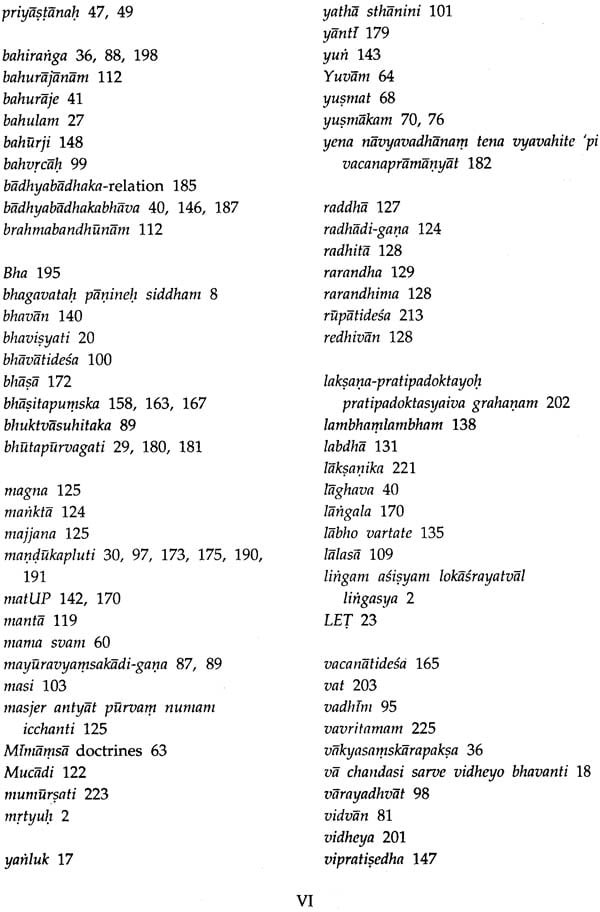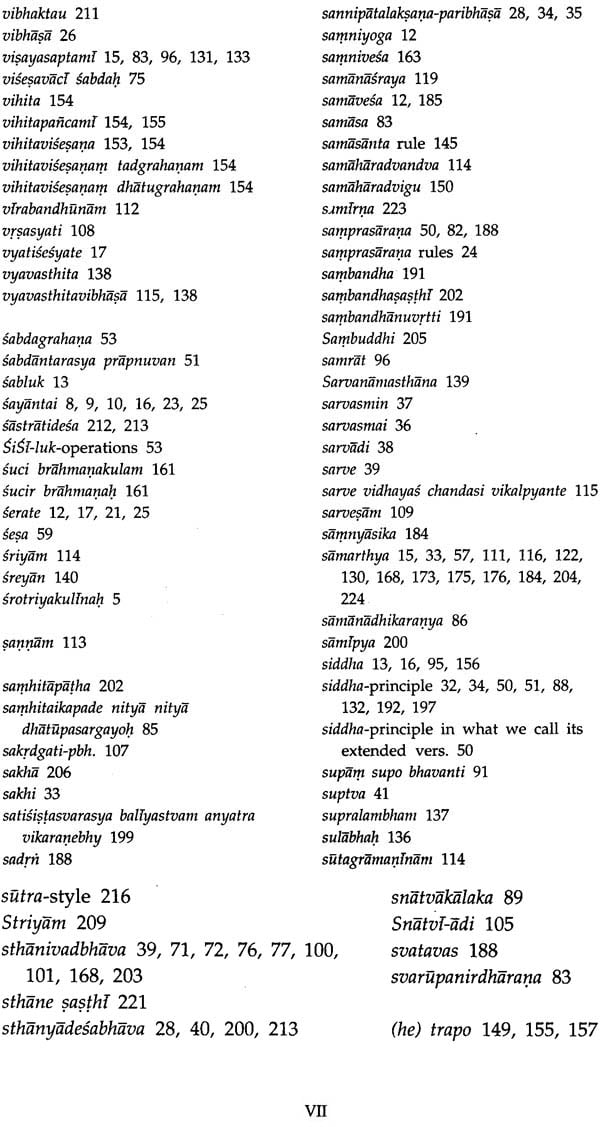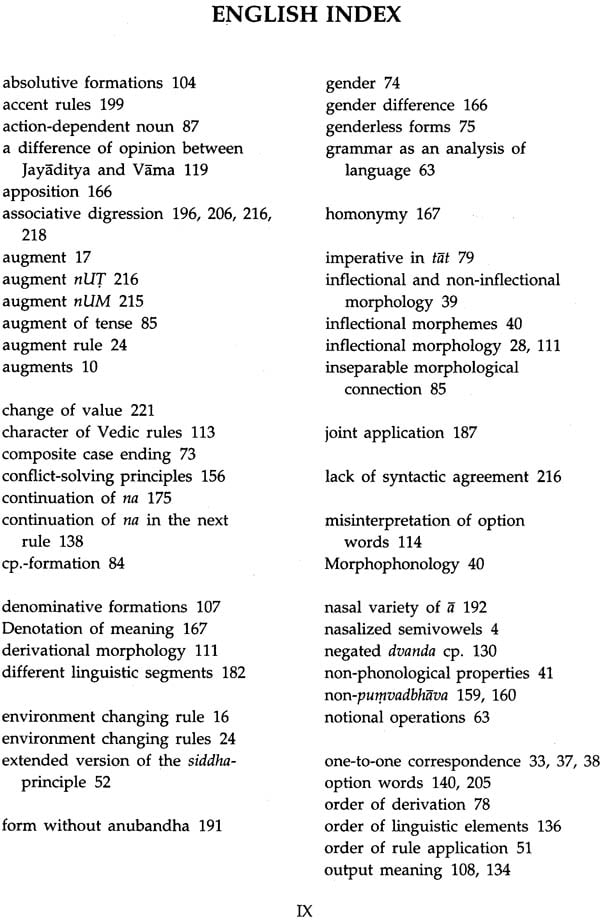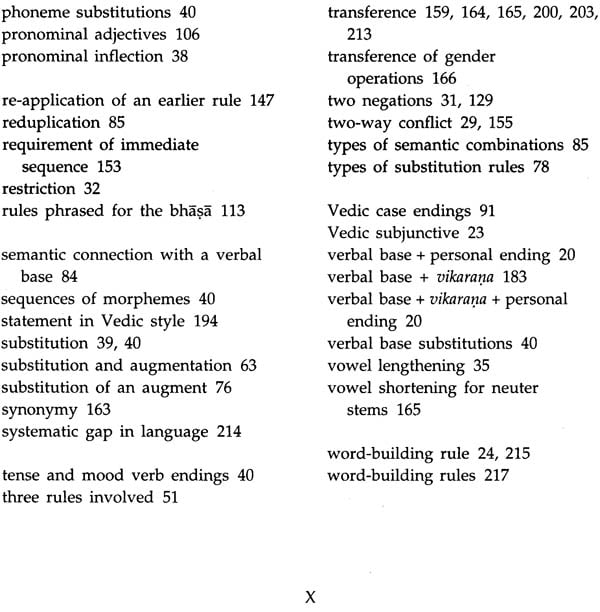
The Astadhyayi of Panini: Volume X (7.1.1 - 7.1.103)
Book Specification
| Item Code: | IDE660 |
| Author: | Translation & Explanatory Notes By. S.D. Joshi & J.A.F. Roodbergen |
| Publisher: | SAHITYA AKADEMI, DELHI |
| Language: | English |
| Edition: | 2003 |
| ISBN: | 8126017058 |
| Pages: | 282 |
| Cover: | Hardcover |
| Other Details | 10.0" X 7.7" |
| Weight | 740 gm |
Book Description
From the Introduction:
P. 7.1: Survey of the pada
A. The main topic
The main topic of the pada is anga, continued from P. 6.4. For details see AP IX, Introduction, p. ix.
B. The organization of P. 7.1
Rules have been grouped together in sections dealing with types of grammatical operations. The two main types of operations are substitution and augmentation. They are unequally divided among sections. Associative digressions may be introduced which fall outside the topic of the section. An example is P. 7.1.53, which is a substitution rule in a section dealing with augment rules. Also, over-lapping the division according to types of operations, groupings of rules are made due to the conditions, like atah (P. 7.1.9), chandasi and saruvanamasthane. Obviously, in the organization of the rules anuvrtti play a big role.
We mention the following sections:
(1) P. 7.1.1-37, substitution rules, and incidentally augment rules.
(2) P. 7.1.38-50, chandas rules, including three nipatana rules, P. 7.1.43, 48 and 49. In the chandas rules features of the Vedic language are treated as substitutions or augments in relation to features established for the bhasa. Compare Kiparsky 1979, p. 56.
(3) P. 7.1.51-83, augment rules. The augments are asUK (P. 7.1.50-51), sUT (P. 7.1.52), nUT (P. 7.1.54-57), nUM (P. 7.1.58-83).
Within section (3) P. 7.1.70-79 are conditioned by sarvanamasthane.
(4) P. 7.1.84-89, substitution rules.
(5) P. 7.1.90-93, nittva.
(6) P. 7.1.93-94, substitution rules.
Within the sections (4)-(6) P. 7.1.86-99 are generally conditioned by sarvanamasthane
(7) P. 7.1.95-97, trjvadbhava of krostu
(8) P. 7.1.98-99, augment rules.
(9) P. 7.1.100-103, substitution rules
Among the rules collected in P. 7.1 there are 21 rules dealing with the Vedic language, a fairly high percentage. Here the big grouping is section (2). Incidental chandas rules are P. 7.1.8; 10, 26, 56, 57, 76, 77, 83, and 103.
The organization of the pada as a whole has been carefully planned.
C. Synopsis of rules
P. 7.1.1 is a substitution rule. The items to be replaced are the artificial (non-linguistic) elements yu and vu forming part of a suffix, like LyuT and NvuL, coming after a verbal base anga. The substitutes are ana and aka respectively. Examples are nandanah 'one who gladdens' and karakah 'one who acts.' According to tradition, the semivowels in yu and vu are nasalized, but in the A. no mention is made of a nasalized y or v.
There are 22 Vts on the rule. Vts IV-IX deal with ugittva 'being marked with (the anubandha) U' attributed to yu and vu. This creates a number of problems to solve which the Vts are phrased. Eventually, Vt. XXII rejects all previous Vts.
